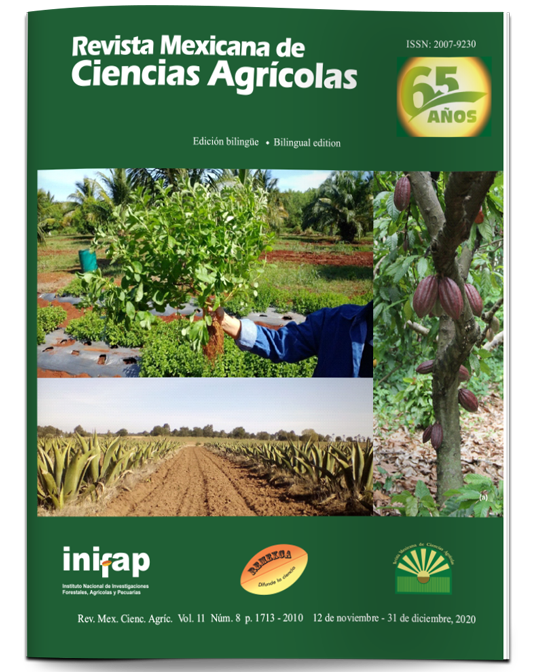Ch’ujuk: clonal variety of ‘stevia’ as an alternative to the mass cultivation of Morita II for the Tropic of Mexico
DOI:
https://doi.org/10.29312/remexca.v11i8.2018Keywords:
agronomic characterization, Ch’ujuk variety, clone, industrialAbstract
The demand for natural sweeteners is increasing in the world, mainly due to the side effects produced by synthetic sweeteners, which has caused several countries to ban their consumption. An example is Japan, which banned the use of synthetic sweeteners since the 1970s and replaced half of its consumption of cane sugar with Stevia rebaudiana (Bertoni) Bertoni crystals. Due to the current relevance of S. rebaudiana, having materials adapted to the conditions of Mexico is an urgent need for the cultivation to increase in the country. Since 2010, CIRSE-INIFAP has been working with the technological development of this crop and, from 2012, the project to promote innovation with Morita II plots began. Subsequently, INIFAP acquired genetic material from Paraguay, which strengthened its source of genetic variability. This variability has made it possible to establish plots and make an individual selection of those materials that show better agronomic behavior, in such a way that at present there is a new varieagronomic widely superior to creole materials and to the Morita II variety, it has large leaves abundant, and highly branched stem. It blooms evenly, which facilitates cutting at the most opportune moment (when the first flower buds appear). The average yield is 7 to 9 t ha-1 year-1 with 60 000 plants ha-1.
Downloads
Published
How to Cite
Issue
Section
License
Copyright (c) 2020 Revista Mexicana de Ciencias Agrícolas

This work is licensed under a Creative Commons Attribution-NonCommercial 4.0 International License.
The authors who publish in Revista Mexicana de Ciencias Agrícolas accept the following conditions:
In accordance with copyright laws, Revista Mexicana de Ciencias Agrícolas recognizes and respects the authors’ moral right and ownership of property rights which will be transferred to the journal for dissemination in open access. Invariably, all the authors have to sign a letter of transfer of property rights and of originality of the article to Instituto Nacional de Investigaciones Forestales, Agrícolas y Pecuarias (INIFAP) [National Institute of Forestry, Agricultural and Livestock Research]. The author(s) must pay a fee for the reception of articles before proceeding to editorial review.
All the texts published by Revista Mexicana de Ciencias Agrícolas —with no exception— are distributed under a Creative Commons License Attribution-NonCommercial 4.0 International (CC BY-NC 4.0), which allows third parties to use the publication as long as the work’s authorship and its first publication in this journal are mentioned.
The author(s) can enter into independent and additional contractual agreements for the nonexclusive distribution of the version of the article published in Revista Mexicana de Ciencias Agrícolas (for example include it into an institutional repository or publish it in a book) as long as it is clearly and explicitly indicated that the work was published for the first time in Revista Mexicana de Ciencias Agrícolas.
For all the above, the authors shall send the Letter-transfer of Property Rights for the first publication duly filled in and signed by the author(s). This form must be sent as a PDF file to: revista_atm@yahoo.com.mx; cienciasagricola@inifap.gob.mx; remexca2017@gmail.
This work is licensed under a Creative Commons Attribution-Noncommercial 4.0 International license.



